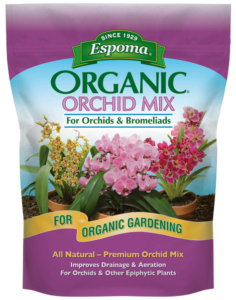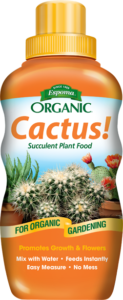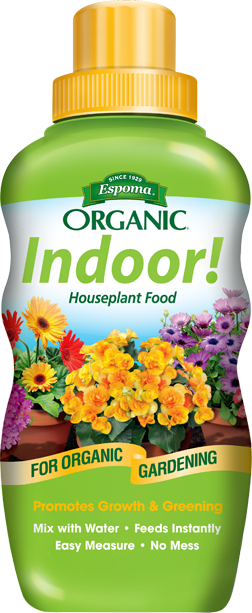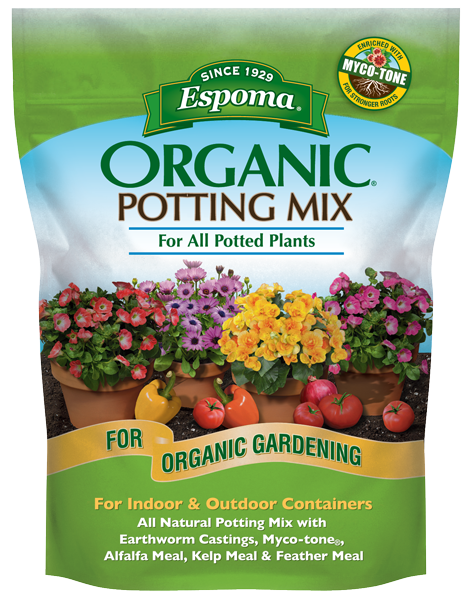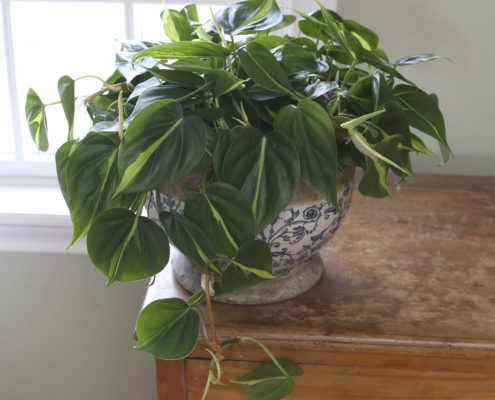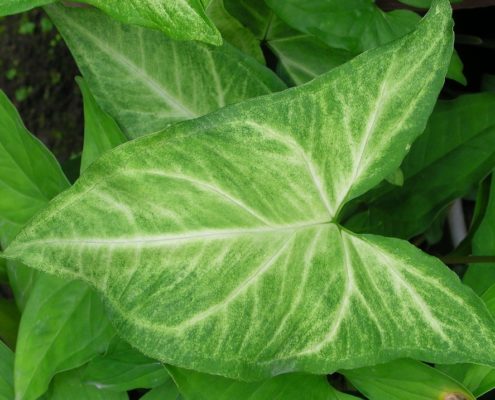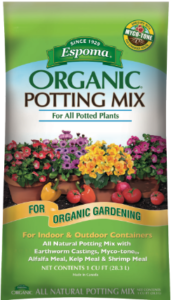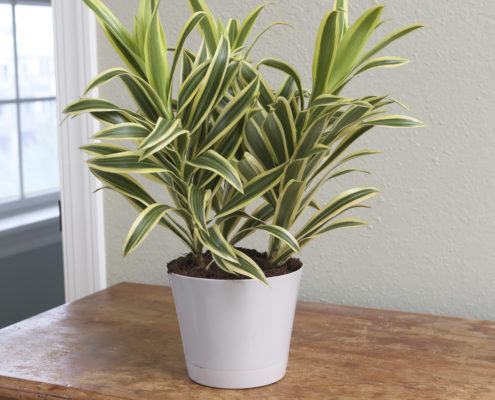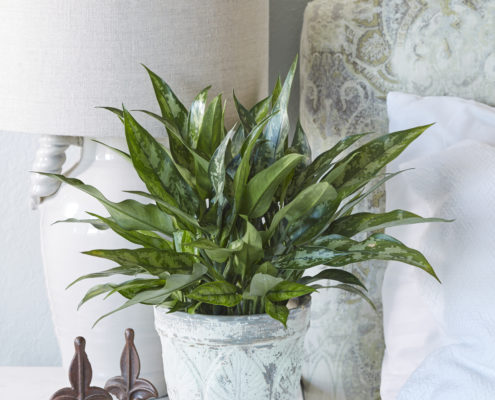Video: Making Tea Tin Arrangements with Garden Answer
/in Container Gardening, Espoma Videos, Garden Answer, Indoor GardeningA rainy week calls for an awesome indoor activity like this one! Remember: Anything that contains something is a potential planter. Watch as Laura from Garden Answer makes the most of her old tea tins using Espoma Organic Cactus Mix!
Featured Products:
Hoya Plants: Caring for Hoya
/in Indoor Gardening, Indoor Gardening, Succulents, SucculentsHoya have been popular house plants for decades and with good reason. They are extremely long-lived, have a classic, deep green, vining foliage and produce fragrant, light pink and red star-shaped flowers. Because of their thick waxy, foliage they are often called wax plants or sometimes porcelain flower referring to the unique texture of the flowers.
These tropical vining plants have a few requirements in order to thrive but nothing too hard. Give them bright, indirect light, humidity and a light touch when it comes to watering. Use a potting mix that allows for good air circulation around the roots. Read on for the best recipe for success.
Light
Select a place that gets bright, indirect light. Don’t let their waxy foliage fool you. They are not succulents and can’t take harsh afternoon light. They will grow in lower light situations but it’s unlikely they will bloom.
Soil and Repotting
Potting soil with good air circulation is very important for Hoya. To create a perfect blend mix equal parts of Espoma’s organic Cactus Mix, Orchid Mix, and Perlite. Hoya like to be pot-bound or crowded in their pots. They will only need to be repotted every two or three years.
Water
Water regularly with room-temperature water, spring through summer. Let the top layer of soil dry between watering. In the fall and winter growth naturally slows down and they won’t use as much water. Water sparingly during fall and winter, give them just enough that the soil doesn’t dry out completely. Too much water can cause flowers to drop.
Humidity
Hoya are tropical plants that thrive in humid conditions. Use a humidifier to bring the humidity levels up, especially in winter when indoor air tends to be dry. A saucer with gravel and water also provides humidity as the water evaporates. Misting with room-temperature water also helps but avoid spraying the flowers.
Temperature
Keep the room temperature warm year-round, try not to let it drop below 60 degrees Fahrenheit. It’s also best to keep plants from touching cold windows and away from heating and cooling vents.
Pruning
Prune in spring before vigorous growth begins. The stems with no leaves are called spurs and shouldn’t be removed. Flowers are produced on the same spurs year after year. Hoya are vining plants that will happily cascade from a shelf or window sill. Conversely, they are often trained onto trellises that are either vertical or circular, giving the impression of a more robust plant.
Fertilizer
Espoma’s Orchid! liquid fertilizer is perfect for Hoya. Feed once a month from spring through fall.
Here are links to other blogs and videos we hope you will enjoy:
Hoya Tips and Propagation from Homestead Brooklyn
A Healthy and Happy New Year with Plants
Espoma Products for Hoyas
Succulent Tree House Fairy Garden
/in Indoor GardeningWatch Laura from Garden Answer make this enchanting Treehouse Fairy Garden!
Espoma Products for Succulent Fairy Gardens

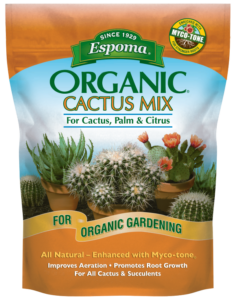
How to Care for Colorful Calathea
/in Indoor GardeningWith their dark green leaves, maroon undersides and geometric patterns, calathea plants are striking additions to any space.
Calathea, maranta, and other marantaceae plants open and close depending on the time of day, hence their nickname: prayer plant.
At first glance, growing them may seem like a stretch for those of us with brown thumbs or low light, but many calathea are great for new plant parents. They combine the best of both worlds with their vibrant colors and tolerance of low-light conditions. And most are non-toxic to children and pets.
As a bonus, these plants are extremely forgiving. They could lose practically all leaves and still come back in full force.
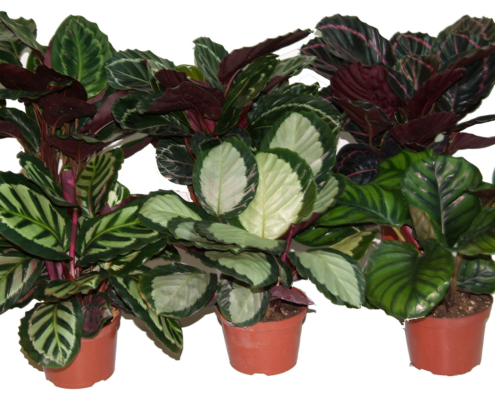
These plants, however, demand a little more from the average plant parent. If you’re looking for a challenge, try Calathea warsewiczii, Calathea zebrine and Calathea white fusion.
To help them thrive, give calathea the right conditions. Place in an area that receives low to bright indirect light. Keep out of direct sun since it’ll bleach the leaves. Generally, the darker the foliage, the less light these plants need.
Calathea like humid environments, so surround them with other plants or place their pot over a tray of pebbles with some water. If your calathea’s leaf tips are browning, chances are plants need more humidity. Calathea enjoy moist soil—but not wet soil, so check every few days and water generously, draining excess water. Mist soil occasionally to increase moisture, but be sure not to directly mist leaves.
Calathea can be fussy about the kind of water they drink. They prefer filtered or dechlorinated water. If only the tips of leaves are brown, this is a sign your water may contain too many minerals or chemicals. Fill your watering can the night before and leave it out to dissipate the chlorine or try using filtered water instead.
Use Espoma’s organic potting soil when it’s time to repot your calathea.
In the event your calathea is not looking so hot, cut the leaves off to the bottom of the stem to encourage new growth. These plants are good at making a comeback and grow quickly. Feed plants regularly with Espoma’s liquid Indoor! fertilizer to promote new growth.
Ready for more low light houseplants?

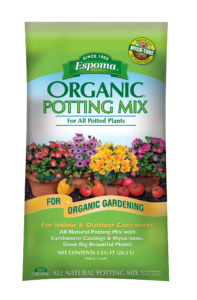
Espoma Products for Coloful Calathea
Don’t Throw That Orchid Away, Get It to Rebloom
/in Indoor GardeningTalk about flower power! Orchids, especially Phalaenopsis or moth orchids, can bloom for months. Moth orchidsare easy to find, relatively inexpensive and one of the easiest orchids to grow. But, plant parents are asking themselves, how do I get them to rebloom? Paying attention to a few key factors will encourage them to bloom again and again.
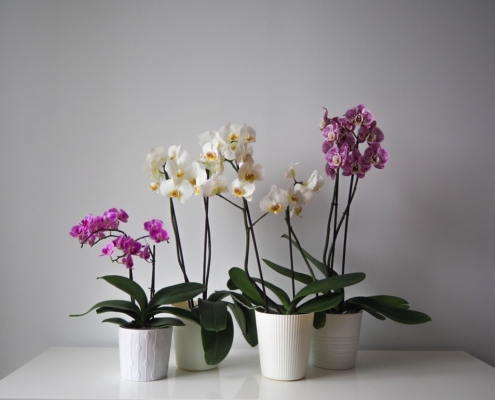
Light:
Inadequate light is the number one reason orchids don’t rebloom. It’s important to find the sweet spot between too much sunlight and not enough. Orchids like bright, indirect light. They don’t care for hot, direct sun – the leaves can actually get sunburnt. If the foliage on your orchid is a healthy looking, deep green, the plant is getting enough light. Light green or yellow foliage is an indication that the plant is not getting enough light.
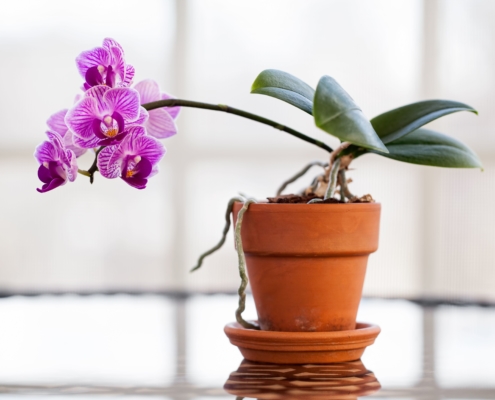
Temperature
Like many plants, orchids need a temperature differential to be encouraged to rebloom. In nature, that would be cool nights. A 10 degree Fahrenheit difference in daytime and nighttime is ideal. That can usually be accomplished when house temperatures go down at night. In addition to cooler evening temperatures, the shortening days of autumn can signal an orchid to form buds.
Water and Feeding:
As with light, orchids want just the right amount of water. They don’t like being dry or standing in water. Try watering them once a week with lukewarm water, making sure that all of the excess water has drained off. This is also the best time to feed your orchid. You can either feed them once a week or once a month. If you plan to feed them weekly, do it weakly. That means to use Espoma’s Orchid! organic liquid fertilizer at one-quarter strength. When feeding once a month you can use the full strength that is recommended on the package.
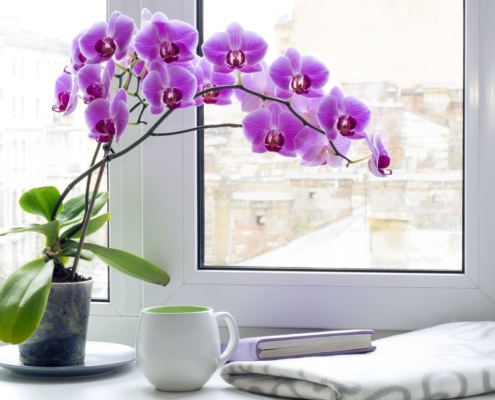
Repotting
Depending on your orchids’ health, you may consider repotting every one to two years. When repotting, only choose a pot with plenty of drainage that is 1-2” wider and plant in an appropriate medium such as Espoma’s Organic Orchid Mix. It’s made with bark and other ingredients to ensure good air circulation. Re-pot right after they have dropped their spent blooms because repotting can cause them to refrain from blooming for a while.
For more information on orchid care, watch this video from Garden Answer.
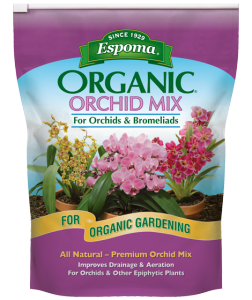
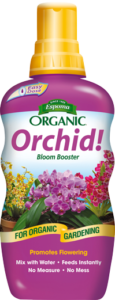
Get Inspired to Create a Next Level Succulent Arrangement
/in Indoor GardeningSucculent arrangements are long lasting creations that can be enjoyed indoors or out. This DIY video from Garden Answer will show you just how easy it is to create your own succulent arrangement
Form Follows Function
Arranging succulents is all about texture, form and color. Use contrasting forms to add interest. Think of the round foliage of a string of pearls plant in comparison to the rosettes of hen and chicks for example. The prickly form of the gold tooth aloe is entirely different than the glossy foliage of a Kalanchoe. Experiment with different textures and heights to create something entirely unique.
Color Palette
Color also plays an important part in the design. Many succulents have colorful foliage. Think of the nearly black Aeonium ‘Zwartkop’ or the orange hues of Graptosedum ‘California Sunset’. Even the container can reinforce the color palette. In this video, a variety of warm colors are used and are picked up the terra cotta accent of the pot.
Care Tips
Caring for a succulent couldn’t be easier. Their number one nemesis is too much water. Pot them up with an organic, potting soil designed for succulents and cacti like Espoma’s Cactus Mix. This will ensure that the soil drains freely. Your succulents also need a special diet. Feed them with an organic liquid fertilizer like Espoma’s Cactus! Succulents love sunshine and their colors will be most intense in bright light.
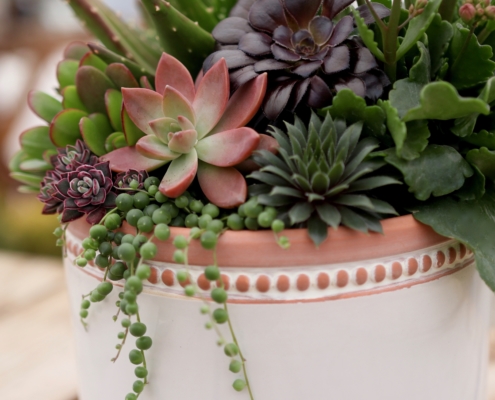
Meet the Stars of This Garden Answer Video
String of Pearls
This is a highly ornamental plant that can be grown both indoors or out. The “foliage” looks like a string of green pearls. They cascade beautifully over the edge of containers and hanging baskets. This is a show-stopper that will attract lots of attention.
Sempervivium ‘Aglo’
Sempervivum, are commonly known as “hen and chicks.” Each spring new rosettes form that are called the “chicks.” This cultivar is known for its terra cotta colored foliage. The color is best in bright sunlight.
Echeveria pulvinata
Echeveria is also known as a Chenille Plant, ‘Ruby Blush’, ‘Ruby Slippers’, or ‘Red Velvet’ because it has a crimson color. The foliage has a velvety coating to protect it from the intense sun in its native habitat.
Aeonium ‘Zwartkop’
‘Zwartkopf’ is a striking succulent, with very dark purple, almost black foliage. The long bare stems are topped with a rosette of leaves and can bloom with clusters of yellow, star-shaped flowers.
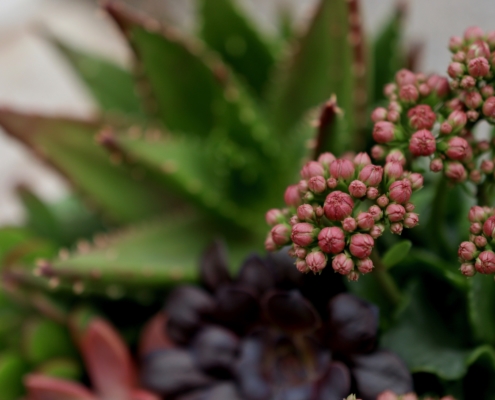
Kalanchoe blossfeildiana
This versatile succulent is prized for its glossy foliage and brightly colored flowers that bloom for months. This is a stand out in a container and is extremely low-maintenance. They are available in a wide variety of colors.
Gold Tooth Aloe
These golden spines may look mean, but they are actually soft and won’t harm you. In full sun the foliage will be tinged with orange. Watch for the red blooms in summer.
Graptosedum ‘California Sunset’
Durable, grayish new leaves of this succulent will become tinged with pink in full sun. Happy plants will produce white flowers in spring. The “sunset” coloration is truly striking. Easy to grow and very low maintenance.
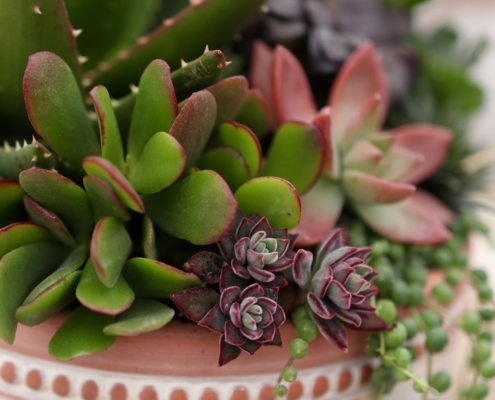
Crassula Jade
Crassula, commonly known as the jade plant, are carefree and easy to grow. This beautiful house plant can also be grown outdoors in the summertime. Jade plants are considered to be symbols of good luck, prosperity and friendship.
Check out these blogs to learn more about growing succulents.
Dress Up Your Desk With Succulents
Succulents With Flowers – Beauty Meets Simplicity
How to Care For Succulents and Cacti in Winter
Espoma Products
Free Plants – Grow Pothos Cuttings in Water
/in Indoor GardeningWith its attractive leaves and low maintenance personality, pothos is one of the best houseplants for new plant parents to grow. Those with trailing vines, like golden pothos, love to fall over the sides of containers. It’s a fun plant to decorate with and a favorite of brown thumb gardeners because it likes low light and minimal watering.
This is also one of the easiest plants to start propagating by cuttings. DIYers will love this trick for getting more pothos plants for free. If your pothos is getting a little leggy or you’re just looking for more plants, start with pothos.
6 Steps to Propagating Pothos
Step 1: Decide how much you want to cut from your plant. Make snips directly below the lowest leaf node. Nodes are those tiny brown bumps on the stem that are the key to growing new roots.
Step 2: Make more cuttings. You’ll need a stem with at least two leaves to root your plant and you’ll want to remove the leaf that is closest to the stem. So clip vines into more cuttings, leaving at least one node on each. Your new roots will form from the node.
Step 3: Place Cuttings in Water: Fill a small mason jar or other glass with water and place the cuttings into the water so the cut ends remain submerged. Place the cuttings indoors near a window, but not in direct sunlight. Check cuttings every few days and refresh water every 1 to 2 weeks.
Step 4: Wait until your cuttings have at least one inch of roots to transplant. This should take about a month. If left in water, your pothos plant will continue to grow roots. The longer they grow in water, however, the harder it will be for them to transition to soil.
Step 5: Pick a container with proper drainage holes and fill two-thirds of the way with Espoma’s Organic potting mix. Place the cuttings around the pot edges and add more soil to keep the cuttings in place. Add more cuttings to the middle and add soil as needed. Water your new pothos plant until water runs out of the bottom of the pot.
Step 6: Place your new pothos in an area where it will get adequate light. Fertilize once a month with Espoma’s Indoor! liquid plant food for more growth.
Looking for more easy care houseplants? Check out Garden Answer’s favorite low light houseplants!
Why Philodendron is the Best Trailing Plant for Your Indoor Jungle and 4 Others We Love Too
/in Indoor GardeningPhilodendron are one of the most popular, versatile, and easy to grow houseplants on the planet. Trailing plants lend an air of the tropical to your indoor jungle. They drape casually down from bookshelves and windowsills, looking graceful with their heart-shaped leaves. They’re absolutely ideal for hanging baskets. It is often said they thrive on neglect and that is not far from the truth. There are over 200 different varieties, some with split-leaf foliage, some with variegation but all are perfect for even novice plant parents.
Light
Philodendron can survive with very little light but will grow faster and healthier in bright indirect light. They will sunburn in harsh, direct sunlight.
Water
Your container should have good drainage. Water when the top 50 percent of the soil is dry, about once a week. If the foliage begins to turn yellow, it’s an indication of too much water. Conversely, if the leaves turn brown, your plant needs more water.
Temperature and Humidity
Philodendron grow well in normal household temperatures, between 70°-80ºF during the day and above 55º F at night. Average home humidity levels are fine but an occasional misting or rinsing off the leaves would be welcome and remove dust.
Pests and Diseases
Over-watering can cause root-rot but yellow leaves will warn you to slow down the watering. While they are rarely bothered by pests, it’s a good idea to keep a look out for aphids and mites. If you do see them, try Insect Soap.
Repotting and Fertilizing
Always use a quality soil like Espoma Organic Potting Mix for optimum plant health. Repot once a year. Feed your plants once a month in spring and summer and, once every other month in fall and winter with an organic indoor plant food.
Endorsed By NASA
NASA lists a Heartleaf Philodendron as a clean air plant that removes formaldehyde, a chemical found in insulation, floor coverings, cleaning agents, pressed wood, and even paper towels, from the air.
More Super Star Vines
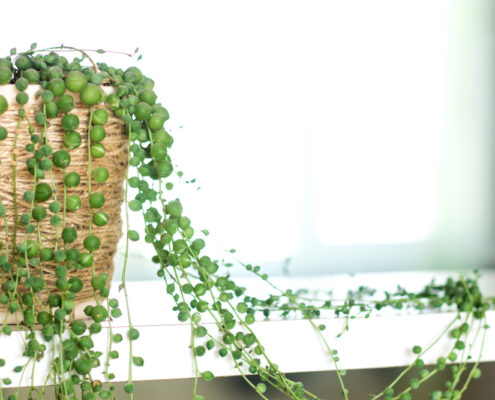
String of Pearls
Looks exactly like its name. This succulent tolerates drought and does best in bright light.
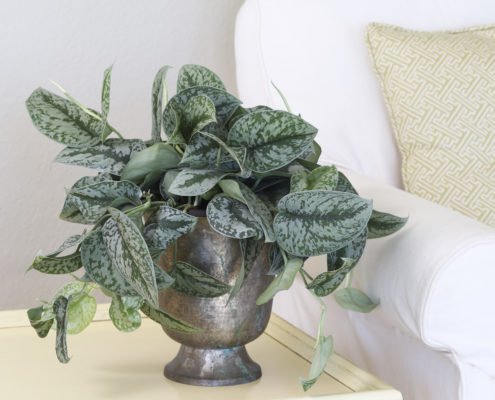
Photo courtesy of Costa Farms
Pothos
Long, leafy vine that prefers bright, indirect light and moist soil. Will grow fairly well in low light too.
Inch Plant or Purple Heart
Beautiful purple foliage on trailing stems with attractive zebra patterned foliage. Perfect for hanging baskets.
Arrowhead Plant
Elegant plant that vines with age, prefers bright light and moderate watering.
Thinking about more indoor plants? Check out this video on the top low-light plants!
Espoma Products for Happy Trailing Plants:
Plant parenthood: Top 5 plants to start your houseplant family with
/in Indoor GardeningWelcome to Plant Parenthood, a reoccurring series helping you with all things houseplant! As plant people ourselves, we are so happy to see you here. This will be your resource to get you started, to teach you how to care, when to fertilize and much more.
Some of you may already have a houseplant or two, which is wonderful. If you are starting from scratch, below are some great houseplants to get you started. They are easy-to-grow and require little maintenance.
Before getting started think about your lifestyle and what chores you want your houseplant to do. Do you want them to clean the air, just sit around and look pretty or maybe both! Also, think about how much light your space gets, as some houseplants love bright light while others thrive in little to low light.
Top Five Plants to Start Your Houseplant Family:
Peperomia
This tried and true classic is getting more and more popular. Peperomia is compact, so you don’t need a lot of space for it. But don’t let the size fool you, it’s variegated and colorful foliage can pack a punch. Keep your plant near a window, as it likes medium to bright light. Water it when the top two inches of soil are dry, though it can go a bit without water and still be fine. It will not grow quickly, however use Espoma’s Indoor! liquid plant food to give it the nutrients it needs to thrive.
Dracaena
Dracaena will need a new home as it ages. When it is young, it is perfect for a tabletop or desk, as it is a little bushy plant. Though, it can grow 5 to 6 feet tall as an adult. Depending on the variety you choose, its foliage can look like little bursts of stars or fireworks on the tips. It adds dramatic texture to any room. Place it where it looks best in your home – it is not picky about how much light it gets. Water it when the top of the soil dries out.
ZZ Plant
This tough houseplant can survive even with the brownest of thumbs. You can put it anywhere in your home or office and it will be happy to see you. It can even survive with only florescent lights and no natural light. Water when the top two inches of soil are dry. Don’t worry if you forget, it may start to drop some of its leaflets to conserve the water left and will rebloom after a good drink.
Aglaonema
Also known as the Chinese evergreen, this houseplant is stunning. It can come in colors from deep green to silver to red. It is slow growing, with large, narrow and glossy oval foliage. When deciding where to put Aglaonema, keep in mind the lighter the variegation, the more light it needs. So if you opt out for dark green foliage, it can thrive in low light. Water when the top two inches of soil is dry and add humidity around the plant in the summertime. Use Espoma’s indoor! liquid plant food during the growing season to give it the nutrients it needs.
Pothos
Have fun with pothos as you can grow it in a hanging basket to allow the foliage to trail down, trellis it up or allow it to grow horizontally across a shelf or on a cabinet. It has a beautiful green foliage with specks of white, yellow or cream mixed in. It can grow in any kind of light, with low humidity. Keep the soil moist, so water it when the top inch of the soil is dry.
Laura from Garden Answer shows off some low light houseplants that are perfect for anyone looking to get started.
Happy Houseplants Need Food:




